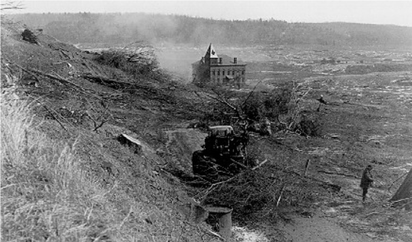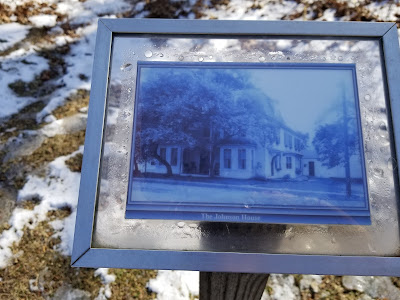 |
| The dam's distinctive spillway |
A new category of posts I'll do concerns short hikes that take less than an hour to complete. Most of these are near major roads and can be easily completed as part of another trip. The first one here is a place I finally got to last November, the New Croton Dam in Cortlandt, NY. This dam, constructed from 1892-1906, impounds the New Croton Reservoir, part of New York City's water supply system and once the tallest dam in the world. The gorge along the lower Croton River is quite scenic and popular among locals. During the summer, there is a parking fee, but outside of the peak season, entry is free.
The parking lot for the area's trail system lies near the base of the dam, next to the Croton River. The trail, generally paved with gravel, departs from the east corner of the lot and begins climbing the side of the gorge, heading toward the Hudson River. The trail soon forks; the left trail continues climbing and left is what you want. There's a hairpin curve and we start to head back toward the dam.
 |
| The trail generally looks like this |
A little over halfway to the dam, the Old Croton Aqueduct departs to the right. Now a state park, this was New York City's original water distribution system. A trail follows the abandoned aqueduct to Manhattan, crossing the Harlem River on the High Bridge. I hope to eventually hike the aqueduct and post about it here.
 |
| Typical blazes |
 |
| The start of the Old Croton Aqueduct trail, now a state park |
Soon enough, we reach the dam. The road across the dam was closed to vehicles after the terrorist attacks in 2001, but it remains open as a walkway.
 |
| Standard NYCDEP water supply facility sign |
 |
| A vestige of the dam's former use |
 |
| Looking south along Croton Dam Road |
Once you're up here, it's a flat walk across the dam.
 |
| Looking into the gorge |
 |
| Partway across, looking back south |
 |
| Looking east at the reservoir |
 |
| Approaching the bridge (replaced 2005) over the spillway |
Near the bridge, there are several plaques.
 |
| The dam and water supply system is a National Historic Civil Engineering Landmark |
Continue across the bridge for some amazing views.
 |
| Crossing the bridge |
 |
| The spillway |
 |
| Across the bridge |
 |
| The bridge |
 |
| Signs that will never see another car |
 |
| You don't say? |
If you continued on the road, you'd reach New York Route 129, which runs along the north side of the reservoir.
 |
| Looking north along the abandoned road |
Since I didn't want to do a road walk, I started back the way I came.
 |
| Looking west into the gorge |
Once I got down into the gorge, I continued past the lot to get a good look at the dam from below.
If you walk onto the bridge carrying the entrance road (watch for cars), the park's signature view can be seen.
 |
| The bridge |
 |
| Signature view of the spillway and bridge |
 |
| Looking downstream toward the Hudson |
From here, I returned to my car and went on my way, continuing to my next stop of the day. What was my next stop, you ask? Bailey Mountain, the highest point in Westchester County, located in Mountain Lakes Park in North Salem. That may get a "short hikes" post in the future.
Getting Here
Croton Gorge Park is located at the base of the New Croton Dam along New York Route 129, just east of Croton-on-Hudson. The park is easy to access from both US Route 9 and the Taconic State Parkway. There is a $10 parking fee Friday-Sunday from May to September.
Resources



















































































